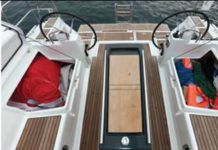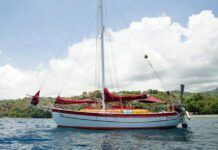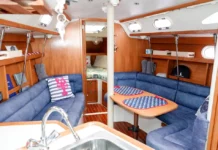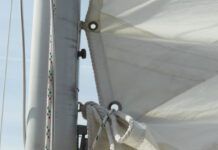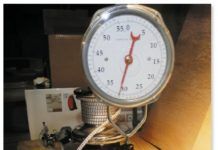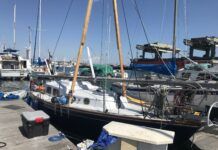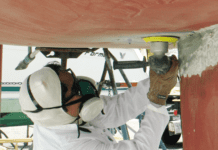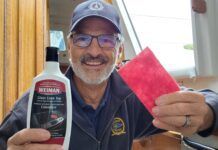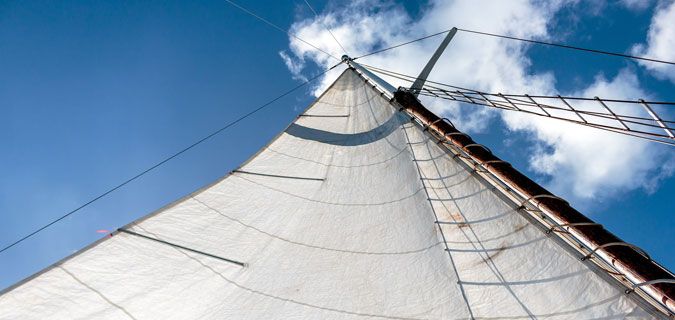Excerpt from The Complete Sailor by David Seidman
It’s rigging that reveals the sailboat to be the anachronism it is – a machine lost in time, and forever timeless. Spars may be of aerospace fibers, their shapes derived in a wind tunnel and supported by strands of exotic alloys. Yet a boat’s rig is still dependent on some of the most ancient of mechanical devices. Where else is it still necessary to understand the principles of levers, mechanical advantage, and block and tackle? Here is a modern device that relies on equipment more appropriate to the building of a pyramid than the moving of a yacht.
Even if you accept the rig for what it is, it still fools you. While it may look like a passive structure intended to achieve absolute rigidity, it is very much the opposite. Rigging should be thought of like the internal workings of a bird’s wings. All those wires are tendons, lines and muscles, and spars are hollow bones. They are controls to shape and move the working surfaces, which are made of cloth rather than feathers. By pulling, twisting, and pushing you can affect the sail’s shape and how it presents itself to the wind, thereby transforming mere rope and wire into something alive.
Standing Rigging
The primary purpose of standing rigging is to support the mast, or masts. The two main categories are shrouds, which provide athwartship bracing, and stays for fore-and-aft support. Stays are also used to hang sails (collectively known as staysails) such as jibs. Standing rigging is further subdivided into a variety of specialized types, the most common of which are shown below.
Stays and shrouds are attached to the mast by metal strips called tangs, and joined to the hull by chainplates. The rig is usually tensioned by turnbuckles, although daysailors use adjusters with movable pins to make the daily chore of rigging and unrigging easier. On some racing boats backstay tension can be changed underway, using hydraulic or mechanical adjusters to affect mast rake (angle) and bend. There are also running backstays, which are used when no permanent backstay can be fitted or when extra bracing is needed.
A boat’s rig is often named for its forestay. Larger boats typically have masthead rigs, with the forestay attached to the top (head) of the mast (the forestay is then properly called a headstay). Smaller craft, or those wanting more control over the fore-and-aft mast bend, use fractional rigs with the forestay attached only partway up the mast. Many fractional-rigged boats, such as Lightnings and Stars, use jumper stays above the forestay to stiffen the mast against the pull of the sail and backstay.
To read more about rigging, pick up additional sailing advice, get your copy of The Complete Sailor from Practical Sailor.



